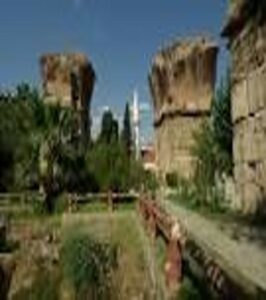Philadelphia – Faithful Church (3:7-13)
Philadelphia means “love of the brethren.” Certainly, brotherly love is an important mark of the Christian. Like all churches, Philadelphia had its imperfections. This Church is a reflection of the some of the churches during the period (1750-1900) A.D.
The Lord Jesus Christ introduces Himself as “He who is holy, He who is true, He who has the key of David, He who opens and no one shuts, and shuts and no one opens.”
- God is holy: God is absolutely He is completely separate from sin. His character is flawless. Christ possesses the holy and sinless nature of God. Because Christ is holy, His church must be holy. As Peter wrote, “Just as He who called you is holy, so be holy in all you do; for it is written: “Be holy, because I am holy.” (1 Pet.1:15-16)
- God is truthful: He is the original, not a copy; the authentic God and not a manufactured one. There were hundreds of false gods and goddesses in those days (1 Cor. 8:5-6), but only Jesus Christ could rightfully claim to be the true God. Truth is based in combination with holiness. It is worth noting that when the martyrs in heaven addressed the Lord, they called Him “holy and true” (Rev. 6:10). Their argument was that, because He was holy, He had to judge sin, and because He was true, He had to vindicate His people who had been wickedly slain.
- Holds the key of David: This symbolizes the authority and control. The term key of the David also appears in (Isa.22:22) where it refers to Eliakim, the prime minister of Israel’s king. One of the treacherous leaders was a man named Shebna who had used his office, not for the good of the people, but for his own private gain. God saw to it that Shebna was removed from office and that a faithful man, Eliakim, was put in his place and given the keys of authority. Eliakim was a picture of Jesus Christ, a dependable administrator of the affairs of God’s people. Jesus Christ also has the keys of hades and of death (Rev. 1:18).
- Opens and no one shuts, and shuts and no one opens: The description points out that Christ has the ultimate power. “I act and who can reverse it?”(Isa. 43:13). No one can shut the doors to the kingdom or to blessing if He holds them open. In the same way, no one can force them open if He holds them shut. He has sovereign control over His church.
History:
Nothing is written about Philadelphia apart from this passage. The church was probably founded during Paul’s ministry at Ephesus (Acts.19:10). A few years after Revelation was written, the church father Ignatius passed through Philadelphia on his way to martyrdom at Rome. He wrote the church a letter of encouragement and instruction. Some Christians from Philadelphia were martyred with Polycarp at Smyrna. The church lasted for centuries. The church stood firm even after the region was overrun by the Muslims, until finally disappearing sometime during the 14th century.

St. Ignatius passed through Philadelphia on his way to Martyrdom at Rome:
Philadelphia city was situated in a strategic place on the main route of the Imperial Post from Rome to the East about 30 miles from Sardis, and thus was called “the gateway to the East.” It was also called “little Athens” because of the many temples in the city. The church was certainly located in a place of tremendous opportunity. The only major problem with the location was that the area was prone to earthquakes. Philadelphia sat on a geological fault, and in 17 AD. It was destroyed by a severe earthquake along with Sardis and ten other cities. Though the initial destruction was greater at Sardis, Philadelphia experienced frequent aftershocks. Some of the citizens refused to move back into the city and remained in the surrounding countryside, which they called “the burnt land.” There did not seem to be much security in the city of brotherly love!
Caesar Tiberius sent financial aid in rebuilding the city. Philadelphians joined with several other cities in constructing a monument as gratitude to Caesar. Going beyond the other cities, Philadelphia actually changed its name to Neocaesarea for a number of years. Several decades later, the city again changed its name to Flavia, in honour of the ruling Roman imperial family. It would be known by both names, Philadelphia and Flavia throughout the 2nd and 3rd centuries.